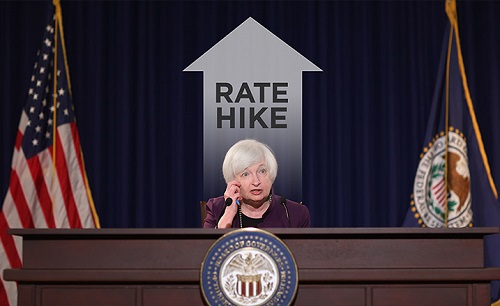The U.S. Federal Reserve is widely expected to raise its benchmark interest rate.
The raise will be possible due to a tightening labor market and may also provide more detail on its plans to shrink the massive bond portfolio it has to support the economic recovery.
The central bank is scheduled to release its decision at 18:00 GMT on Wednesday at the conclusion of its two-day policy meeting. Fed Chair Janet Yellen is due to hold a press conference at 18:30 GMT.
"The expectation of a rate hike...is widely held, and has been reinforced by the most recent round of Fed communications," said Michael Feroli, an economist with J.P. Morgan.
Economists polled by Reuters overwhelmingly see the Fed raising its benchmark rate to a target range of 1.00 to 1.25 percent this week.
The Fed embarked on its first tightening cycle in more than a decade in December 2015. A quarter percentage point interest rate rise on Wednesday would be the second nudge upwards this year following a similar move in March.
Since then, the unemployment rate has fallen to a 16-year low of 4.3 percent and economic growth appears to have reaccelerated following a lackluster first quarter.
However, other indicators of the economy's health have been more mixed. The Fed's preferred measure of underlying inflation has retreated to 1.5 percent from 1.8 percent earlier in 2017 and investors are growing increasingly doubtful policymakers will be able to stick to their anticipated pace of tightening of three interest rate rises this year and next.
There are also growing doubts on the size and scope of fiscal stimulus the Trump administration may inject into the U.S. economy with campaign promises on tax reform, financial regulation rollbacks and infrastructure spending either still on the drawing board or facing hurdles in Congress.
Fed policymakers' confidence in their outlook will be on show on Wednesday when they release their latest set of quarterly projections on growth, unemployment and inflation as well as their expected rate hike path.
Few economists expect major changes in the Fed's overall forecasts this time around, although the extent of jitters on inflation moving away from the Fed's 2 percent goal will likely be reflected at an individual level.
Markets are, however, increasingly anxious for the Fed to give a clearer steer on the timing and details of its previously announced plan to reduce this year its $4.2 trillion portfolio of Treasury debt and mortgage-backed securities, most of which were purchased in the wake of the financial crisis to help keep rates low and bolster the economy.


